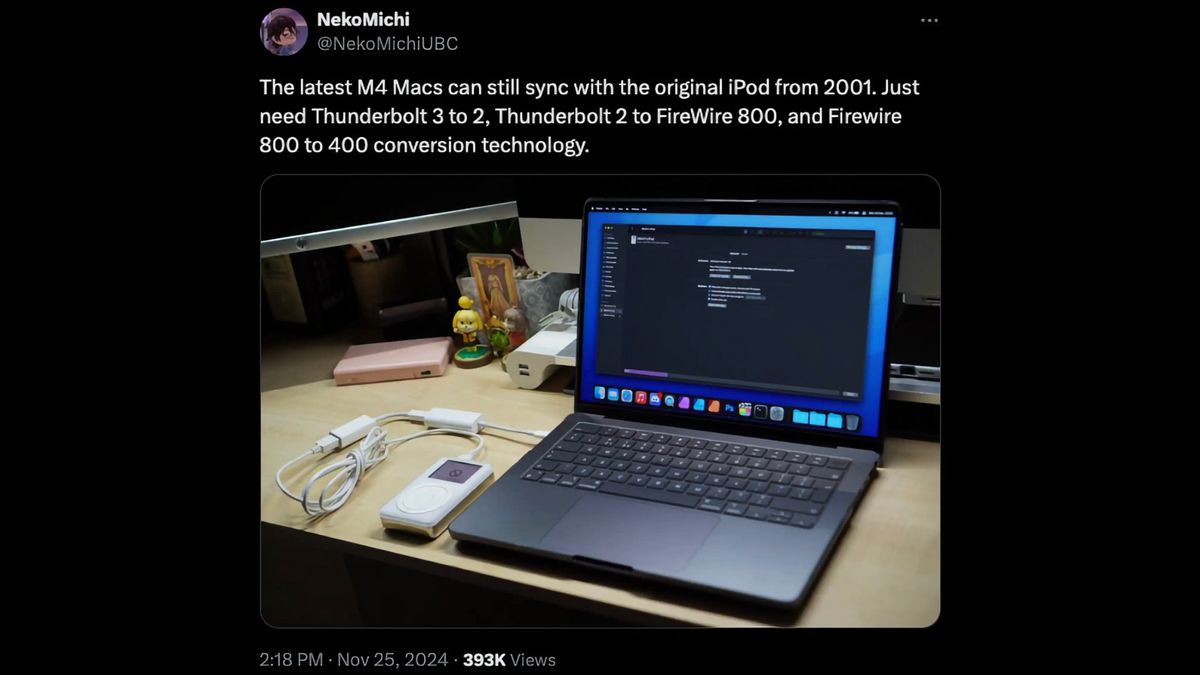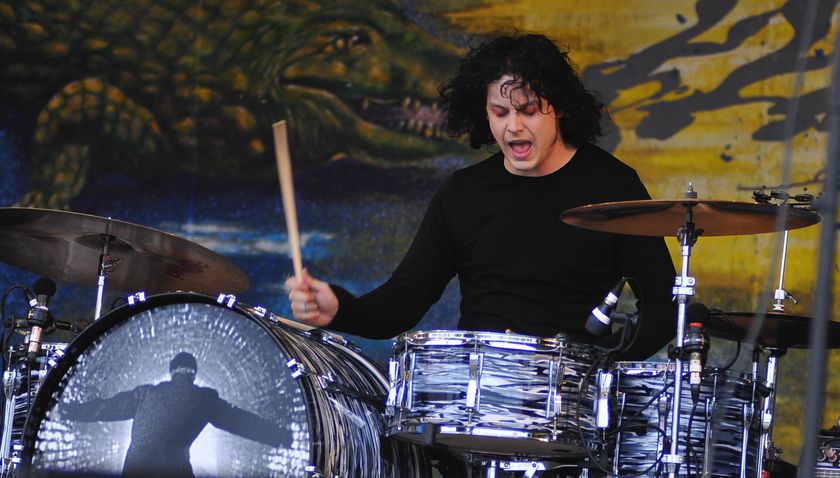Meet the dongle nightmare that’ll get your original iPod working with your M4 Mac
Attention hipsters. Still rocking Apple’s first ever 5Gb iPod from 2001? We've got some great news

If you were one of the Apple faithful who sprang for an original iPod in November 2001 then the odds are that the player – with its finickity mechanical scroll wheel and questionable battery lifespan – has long since hit your recycling bin. Or more likely that 5Gb (and 10Gb introduced in March 2002) storage capacity began to get outpaced by your Napster collection…
But if you were a little more gentle, actually paid for your music or perhaps went for the slightly better-fettled second or third generation you might – might – still be rocking a classic. And while it always has (and always will be) possible to charge it via its out-of-date Firewire 400 connection getting music on and off the thing must surely be impossible by now?
Not so fast.
Seems that in a commendable nod to some of their earliest adopters, it’s still possible for your brand new Apple Mac M4 (be it Pro, Mini, iMac, or Macbook) to talk to your iPod pride and joy, with compatibility for Firewire iPods – right from the very first 5Gb models – still built into Mac OS at system level.
The discovery comes thanks to X (formerly Twitter) user @NikiMichiUBC who shared their impressive daisy chain to prove that it works.
So let’s give it a try. First, there’s the small matter of that woefully out-of-date iPod Firewire port.
Firewire was the early, Apple/Sony/Texas Instruments-developed data-plus-power connection that allowed data and juice to be zapped down a single (admittedly multi-stranded) cable at speeds far in excess of the first-gen USB standard of the time. It was the iPod’s secret weapon, setting up a seamless ecosystem where a Mac (and later a PC) could charge and sync music to an iPod with a single fast connection and, following its introduction in April 2003 – send music purchased on iTunes to your device, effectively killing physical music media in the process.
Get the MusicRadar Newsletter
Want all the hottest music and gear news, reviews, deals, features and more, direct to your inbox? Sign up here.
The iPod triggered renewed interest in Apple and the Mac and became fundamental in bankrolling the once-struggling company, turning it into the iDevice behemoth we know today.
But Firewire 400 to your modern Mac’s USB-C in 2024? Where there’s a will…
First, you’ll need a Firewire 400 to Firewire 800 cable. Firewire 800 was the second-gen of Firewire, doubling its speed but – of course – changing the shape of its connector in the process. This lead will transform your iPod’s 400 output into something a little more up-to-date.
Now connect your new Firewire 800 plug into the socket of your Apple Firewire 800 to Thunderbolt 2 adapter. Thunderbolt replaced Firewire in Apple’s affections in 2011 effectively doing the same job, but much faster and spawning its ubiquitous sister, the Lightning port found on tens of millions of iPhones.
You’ve now got something that at least looks like it could plug into your modern-day Mac. But not so fast. While Thunderbolt 2 uses a USB-C shaped connector (boosting ease) it’s actually not compatible with today’s Thunderbolt 3 and 4 standards (boosting confusion). So one more dongle required.
Fortunately, Apple has a fix for that – Apple’s Thunderbolt 2 to Thunderbolt 3 adapter helped new(ish) gear make the jump to today’s standards and will even do the trick at the end of our iPod chain.
That’s all you need. And while the end result is limited access to the content of your old ‘Pod – iTunes and the iTunes Store now being defunct and replaced by the streaming-based Apple Music – we're certain that we’ve just made someone’s day somewhere.
You can thank us later.
Daniel Griffiths is a veteran journalist who has worked on some of the biggest entertainment, tech and home brands in the world. He's interviewed countless big names, and covered countless new releases in the fields of music, videogames, movies, tech, gadgets, home improvement, self build, interiors and garden design. He’s the ex-Editor of Future Music and ex-Group Editor-in-Chief of Electronic Musician, Guitarist, Guitar World, Computer Music and more. He renovates property and writes for MusicRadar.com.











